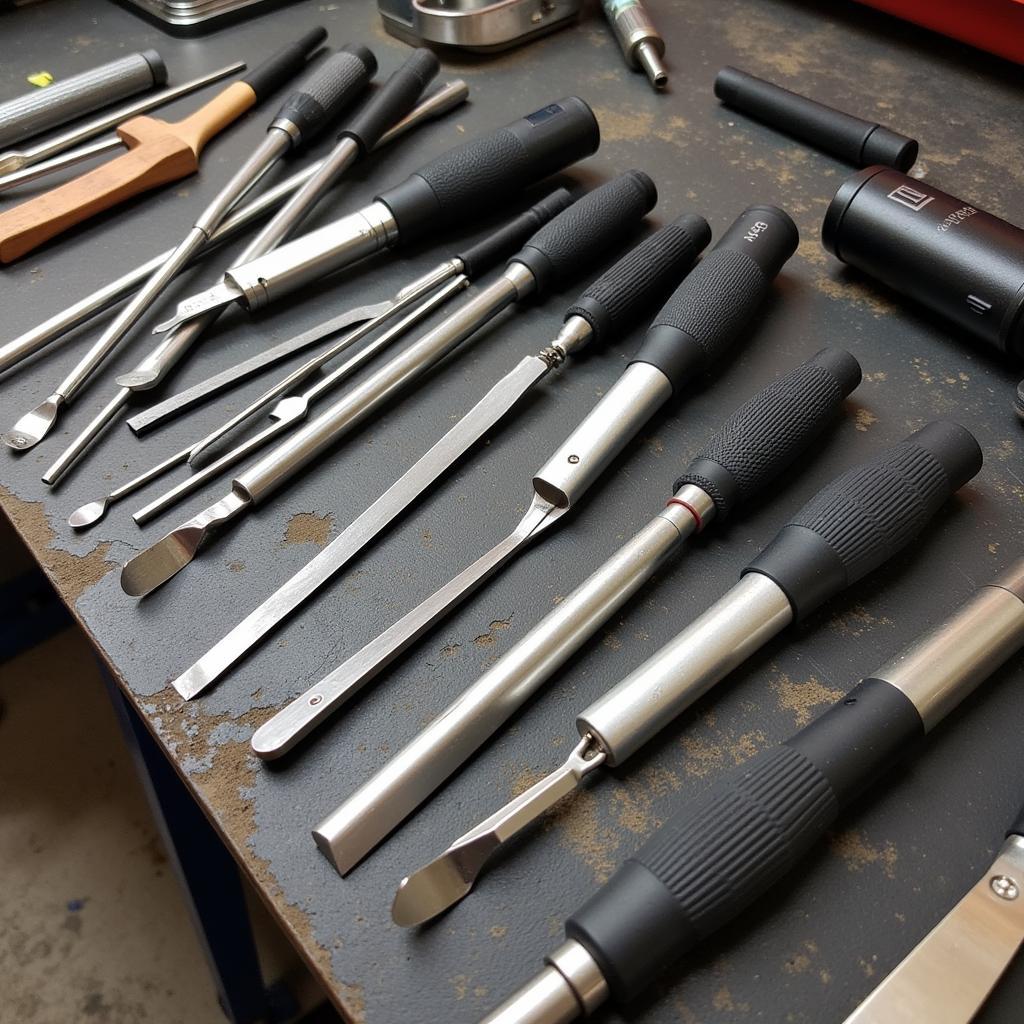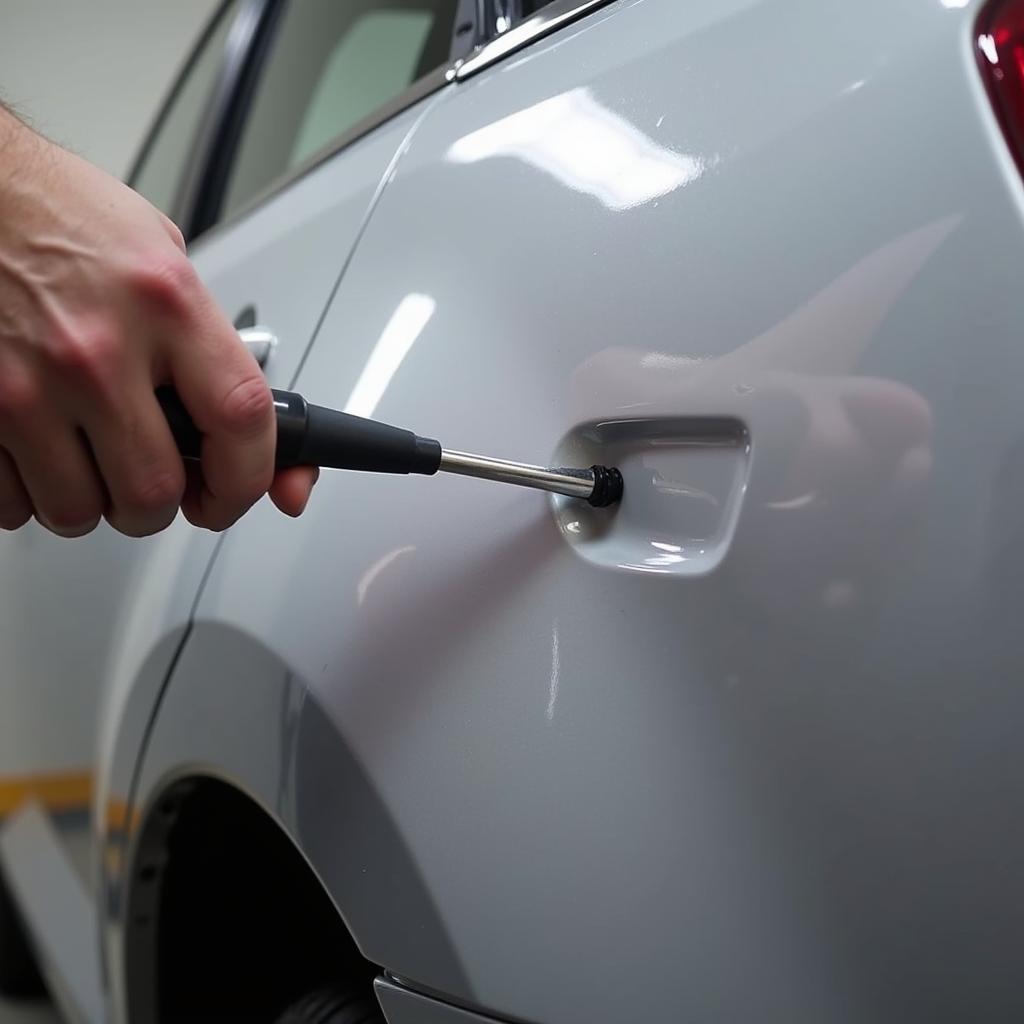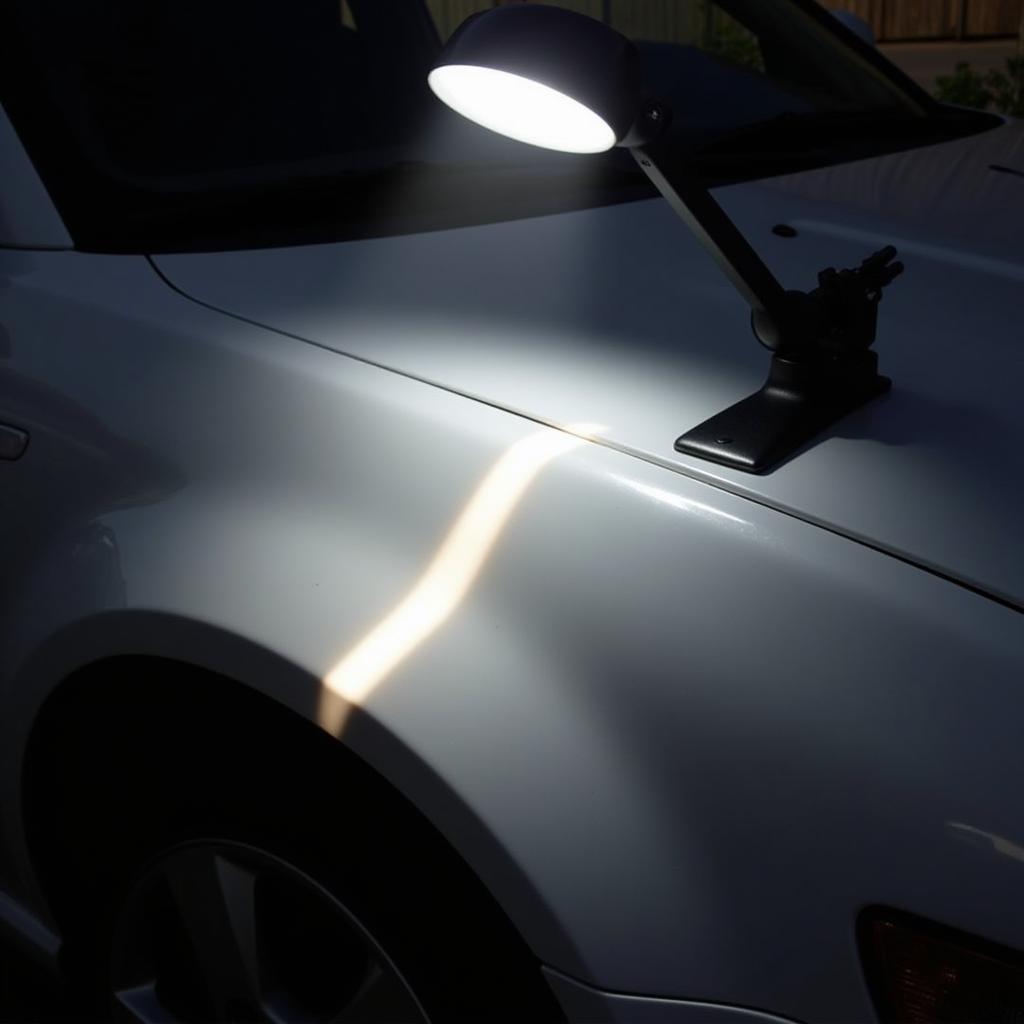Fixing minor dents on your car can be surprisingly straightforward with the right push tools. This guide will delve into the world of dent removal using push tools, covering everything from identifying the right tools to mastering the techniques for a professional-looking repair.
Understanding Paintless Dent Repair (PDR) and Push Tools
PDR is a method of removing minor dents and dings from a car’s body without affecting the original paint job. Push tools are essential for PDR, allowing you to access and massage the dent from the inside out. These tools come in various shapes and sizes, each designed for specific types of dents and access points. Choosing the right tool is crucial for successful dent removal.
 PDR Push Tools Set for Various Dent Sizes
PDR Push Tools Set for Various Dent Sizes
Choosing the Right Push Tools for Dents
Different dents require different approaches. Small, shallow dents might only need a simple tap-down tool, while larger, deeper dents might require tools with broader tips or curved shafts. Knowing the type of dent you’re dealing with will guide you toward the correct tool. tools to change car tires might also be needed if the dent is accompanied by a flat tire.
Types of Push Tools
- Tap Down Tools: These are ideal for small, shallow dents and are often used with a knock-down hammer for precise control.
- Rods and Levers: Used for accessing hard-to-reach areas and applying leverage to push out dents from behind panels.
- Blending Hammers: These hammers help to smooth out the repaired area and ensure a seamless finish.
 Using a PDR Push Rod to Repair a Dent
Using a PDR Push Rod to Repair a Dent
Mastering the Technique: How to Use Push Tools for Dents
Using push tools effectively requires patience and practice. Start by accessing the backside of the dent. This might involve removing interior panels or using specialized access tools. Once you have access, carefully apply pressure with the chosen push tool, working from the center of the dent outwards. Remember, less is more. Too much pressure can create high spots, requiring further correction.
Tips for Successful Dent Removal
- Start with gentle pressure: Gradually increase pressure as needed.
- Work from the center outwards: This helps to evenly distribute the pressure and avoid creating new imperfections.
- Use proper lighting: Adequate lighting is crucial for identifying high and low spots.
- Practice on scrap panels: Before working on your car, practice your technique on scrap metal.
“Practice makes perfect,” says automotive expert, Dr. James Miller, “especially with PDR. Start with simple dents and gradually move to more complex repairs.”
 PDR Lighting Setup for Dent Identification
PDR Lighting Setup for Dent Identification
Advanced Techniques and Tools for Complex Dents
For more complex dents or dents located in difficult-to-reach areas, you might need specialized tools. Glue pulling, for instance, is a technique that uses glue tabs and a slide hammer to pull out dents. This is particularly useful for dents on edges or creases where access from behind is impossible. Hand tools to straighten bent car metal may also be necessary for more extensive damage.
When to Seek Professional Help
While DIY dent repair can be rewarding, some dents are best left to the professionals. Large, deep dents, dents with creased metal, or dents that have damaged the paint should be addressed by an experienced PDR technician. They have the expertise and specialized equipment to handle these more complex repairs. If you are researching cars for purchase, you may find used car research tools helpful. General car safety tool information is also important for all car owners.
Conclusion
Push tools are valuable instruments for repairing minor dents on your car. With practice and the right technique, you can achieve professional-looking results. However, always assess the damage carefully and remember that seeking professional help is sometimes the best course of action for more complex dent repairs. Understanding your tools and the dent itself is crucial for successful paintless dent repair using push tools.
FAQ
- What are the best push tools for beginners?
- How do I access the back of a dent?
- Can I use push tools on aluminum panels?
- How much pressure should I apply when using a push tool?
- How do I fix a dent on a car door?
- What are the common mistakes to avoid when using push tools?
- When should I call a professional for dent repair?
Common Scenarios and Questions
Scenario 1: Small dent on the hood. Question: Which tap-down tool should I use?
Scenario 2: Dent behind the door panel. Question: How do I remove the door panel without causing damage?
Scenario 3: Dent on a curved surface. Question: Which tool is best for accessing and repairing this type of dent?
Further Resources
You can find more information on use of nail care tools and equipment lesson plan.
For assistance, contact us via WhatsApp: +1(641)206-8880, Email: [email protected] or visit us at 910 Cedar Lane, Chicago, IL 60605, USA. We offer 24/7 customer support.

Leave a Reply